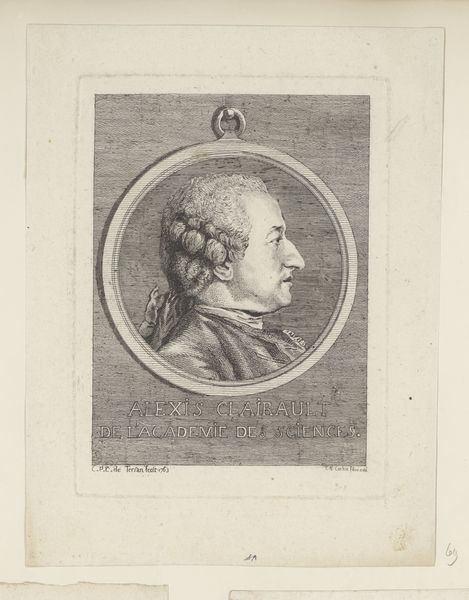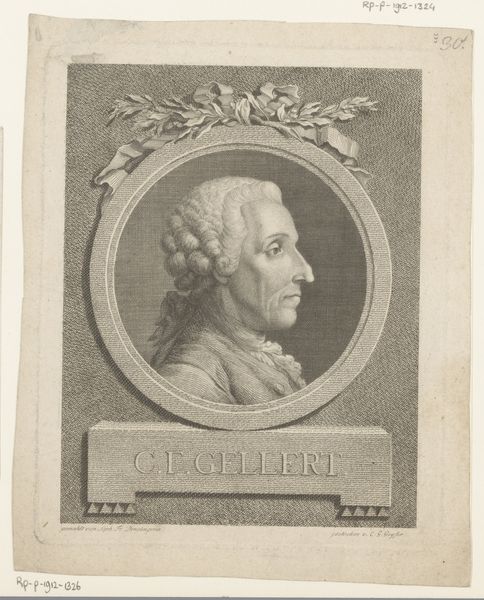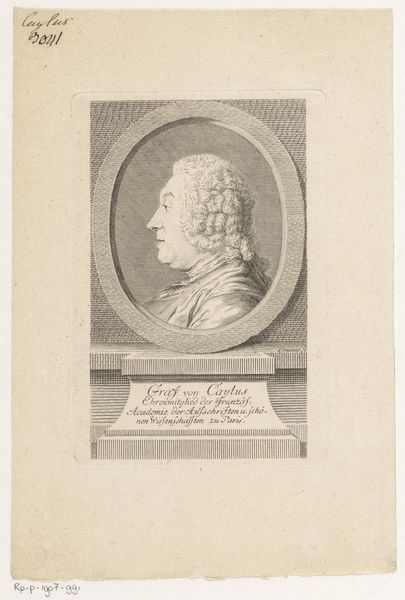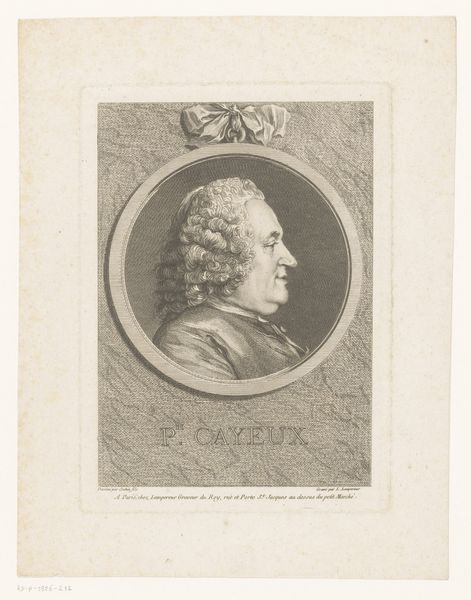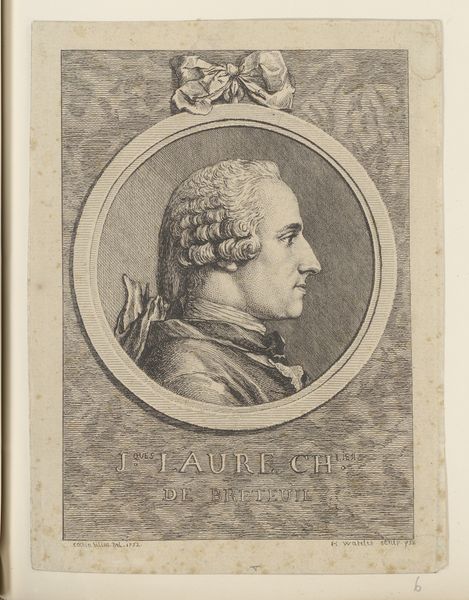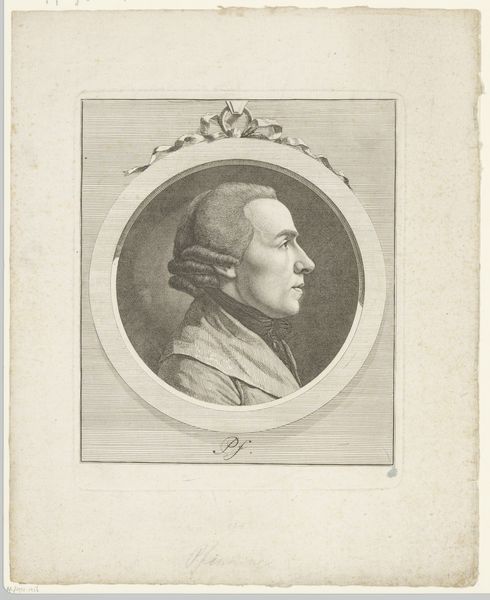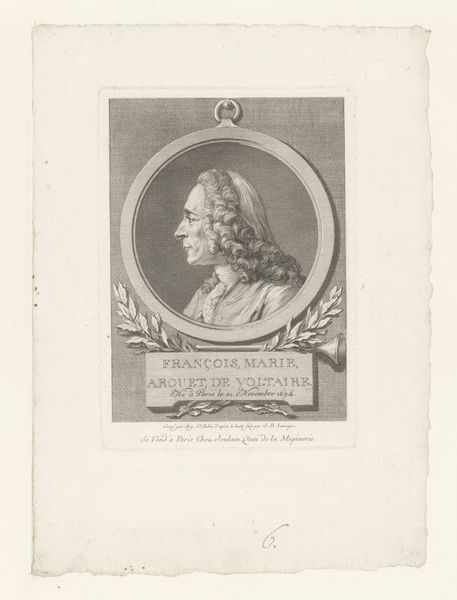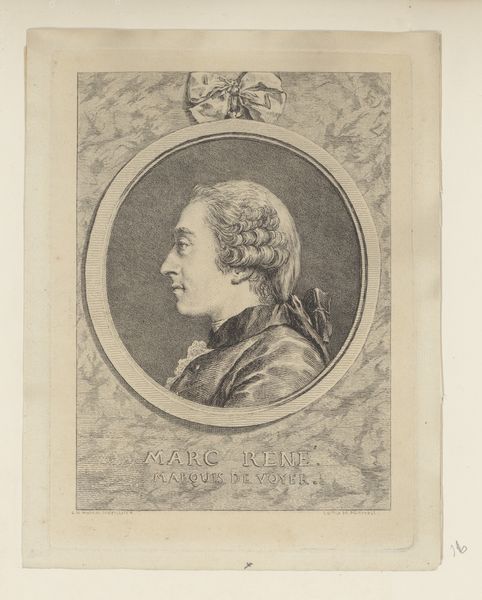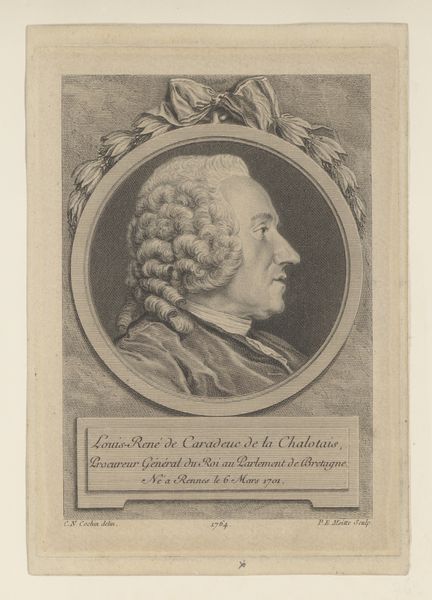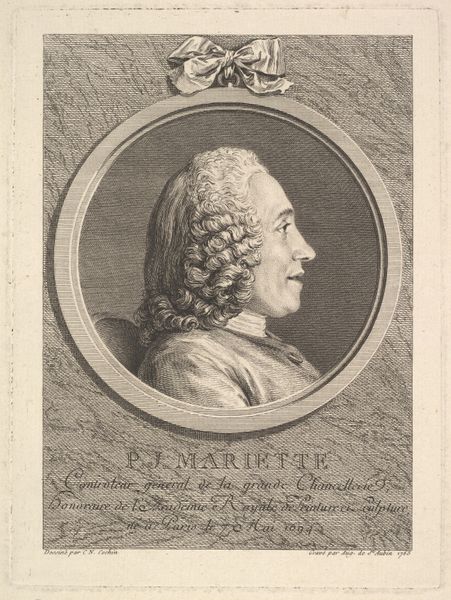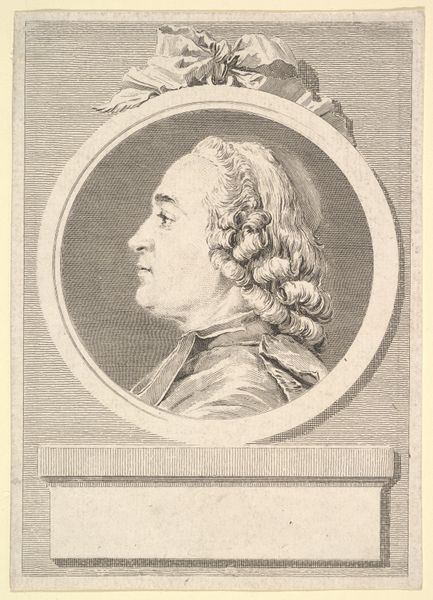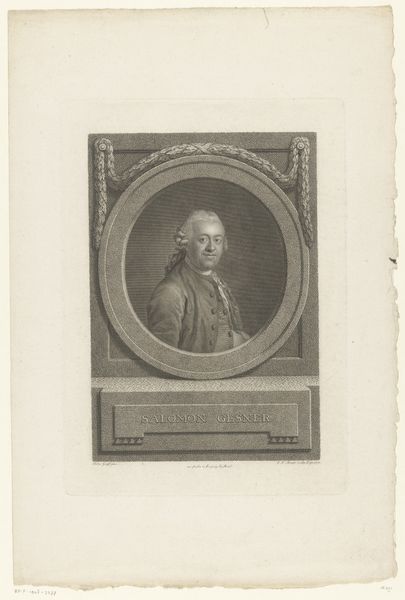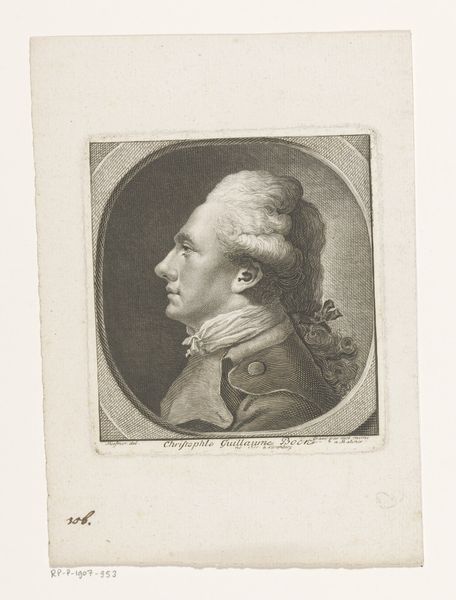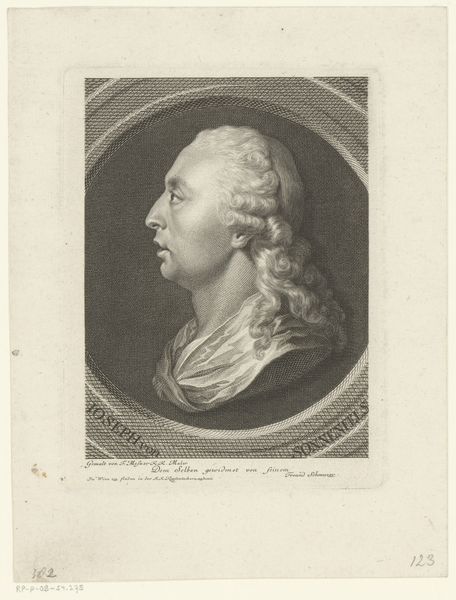
engraving
#
portrait
#
baroque
#
old engraving style
#
engraving
#
profile
Dimensions: height 194 mm, width 140 mm
Copyright: Rijks Museum: Open Domain
Editor: This is a self-portrait by Claude Henri Watelet from 1753. It's an engraving and the fine lines really strike me. What does it tell you? Curator: Looking at this portrait, I see a focus on the means of production inherent in its very creation. An engraving, like many prints of the era, suggests a world where art serves multiple purposes, extending beyond mere aesthetics to address production, labor and access to imagery. It’s an intaglio print. What does that indicate about Watelet’s process and the potential audience for this image? Editor: Well, I guess the labor is more intricate because it involves carving into a plate, but the output can be multiplied, democratizing the image, to some extent? Curator: Precisely! Think about the socioeconomic context. This engraving wouldn't have the same aura of exclusivity as a unique painted portrait, catering to a potentially broader audience seeking access to art and representation, shaping and disseminating societal ideals. The consumption of imagery becomes a very different act. Editor: So, is it about bringing art to more people? Curator: In part, yes. But it also touches upon the social status implied by reproducible imagery and what this availability could suggest about changes in class and wealth. Editor: I see. So it's not just the image itself, but the process and distribution behind it that carries meaning. It also shows that his work may reach beyond an individual commissioner. Thanks! Curator: Exactly. Focusing on those elements opens up new ways to consider artistic intention. A view into the artist's practice sheds a very new light on art.
Comments
No comments
Be the first to comment and join the conversation on the ultimate creative platform.
